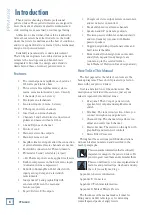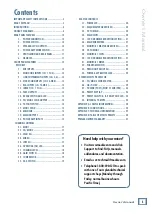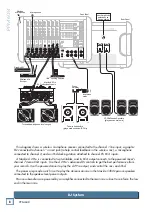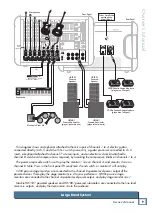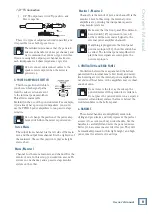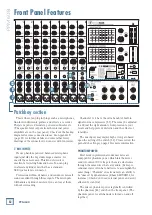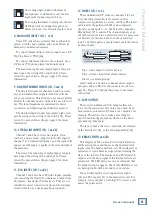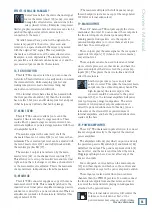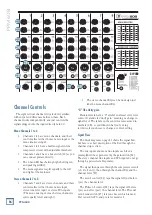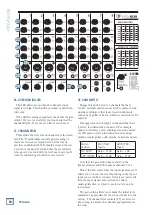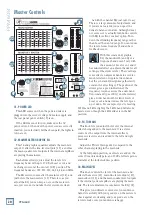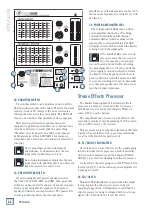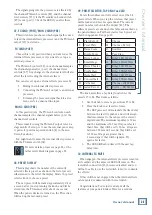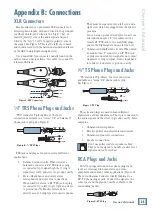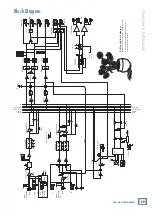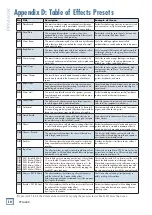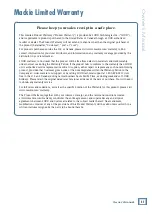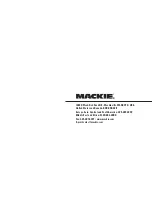
18
PPM608
PPM608
28. GAIN SWITCH
Engage this switch [low] on channels that have
“louder” instrumentation connected. For example, loud
singing or yelling or other loud–voiced instruments,
such as bass, guitar or horns (whether connected via DI
or mic'd).
Disengage this switch [high] on channels that have
“quieter” instrumentation connected. For example,
spoken word shows, poetry readings, stand-up comedy
or other quieter–voiced instruments such as finger-
picked acoustic guitar, cello, djembe, bouzouki and cats.
Note that the gain switch has no effect on the
line-level inputs and RCA inputs of channels 7 or 8.
This is the first control that the input signals meet. It
allows you to choose the level depending on the type of
input source you have connected. If it is set incorrectly,
then the input signals may overload the mixer,
causing distortion, or it may come in too low, and be
lost in noise.
The gain switch allows you to make the initial level
adjustment, appropriate for the connected device (mic
or line). The channel level controls [27] are more for
fine-tuning, to balance the channels appropriately for
the song.
26. OVERLOAD (OL) LED
This LED will come on when the channel’s input
signal is too high. This should be avoided, as distortion
will occur.
If the LED is coming on regularly, check that the gain
switch [28] is set correctly for your input and that the
channel EQ [23–25] is not set with too much boost.
27. CHANNEL LEVEL
This adjusts the level of each channel onto the main
mix. The “U” mark indicates unity gain, meaning no
increase or decrease of signal level. All the way up
provides an additional 20 dB, should you need to boost
a section of the band. If you find that the overall level
is too quiet or too loud with the level near unity, you’ll
want to confirm the gain switch is set correctly.
Switch
position
MIC (XLR)
Inputs
LINE (TRS)
Inputs
IN (LOW)
Gain = 25 dB
Gain = 0 dB
OUT (HIGH) Gain = 45 dB
Gain = 20 dB
21
22
23
24
25
27
28
29
30
26
30

